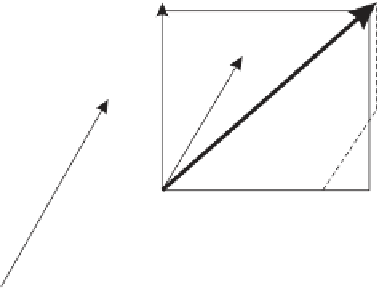Global Positioning System Reference
In-Depth Information
1
2
3
4
5
6
7
8
9
10
11
12
13
14
15
16
17
18
19
20
21
22
23
24
25
26
27
28
29
30
31
32
33
34
35
36
37
38
39
40
41
42
43
44
45
P x,y,z
(
)
z
-
F
z-
y
y
-
x-
P
(
)
x
[30
Figure 2.8
Components of the gravity vector.
Lin
—
0.8
——
Nor
*PgE
x
− ξ
s
F
x
F
y
F
z
cos
α
k
2
m
s
2
y
− η
s
=−
=−
F
=
F
cos
β
(2.43)
cos
γ
z
− ζ
s
[30
where
(x
s
=
− ξ
)
2
+
(y
− η
)
2
+
(z
− ζ
)
2
(2.44)
Th
e negative sign in the decomposition indicates the convention that the force vector
po
ints from the attracted mass toward the attracting mass. The coordinates
(x,y,z)
id
entify the location of the attracted mass in the specified coordinate system, and
(
ξ
,
η
,
ζ
)
denote the location of the attracting mass. The expression
k
2
m
s
V
=
(2.45)
is called the potential of gravitation. It is a measure of the amount of work required to
transport the unit mass from its initial position, a distance
s
from the attracting mass,
to infinity. Integrating the force equation (2.42) gives
∞
∞
∞
s
=
k
2
m
s
2
k
2
m
s
k
2
m
s
V
=
Fds
=
ds
=−
(2.46)
s
s
In vector notation, the potential of gravitation
V
and the gravitational force vector
F
are related by


















































